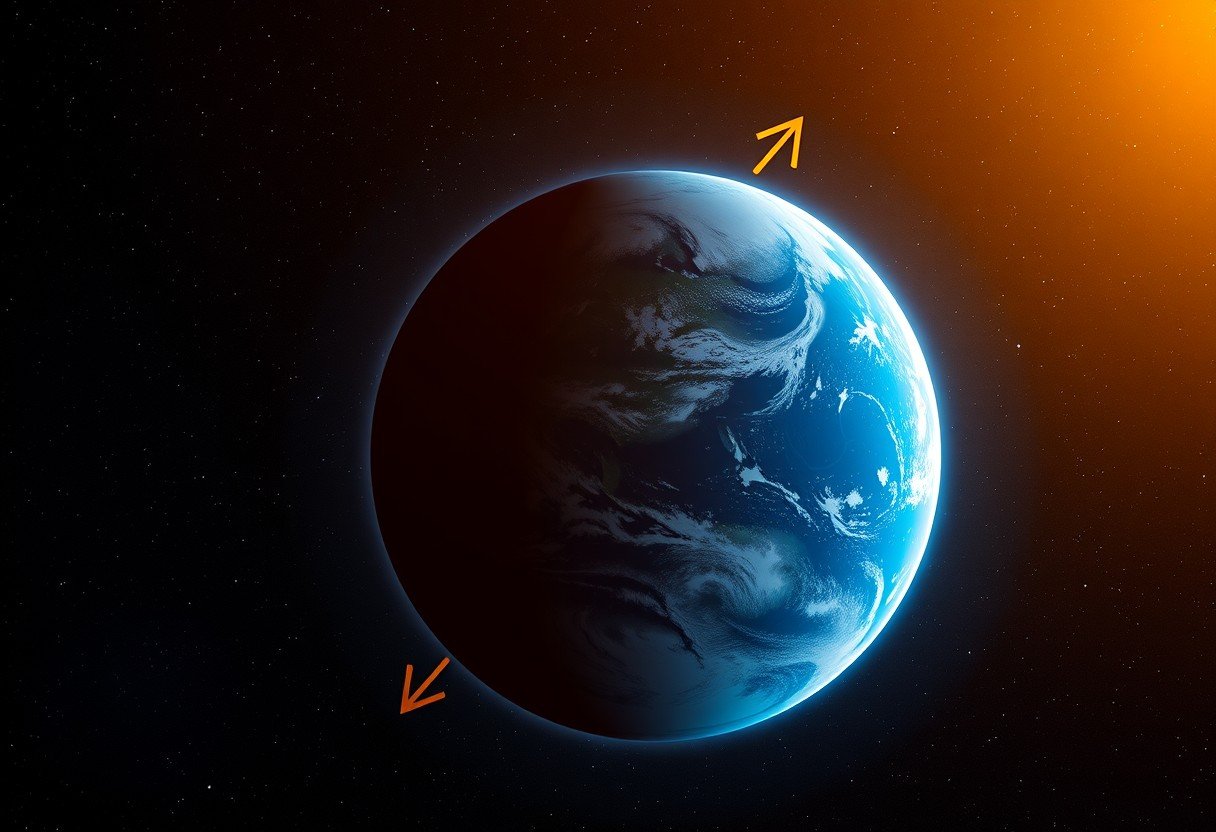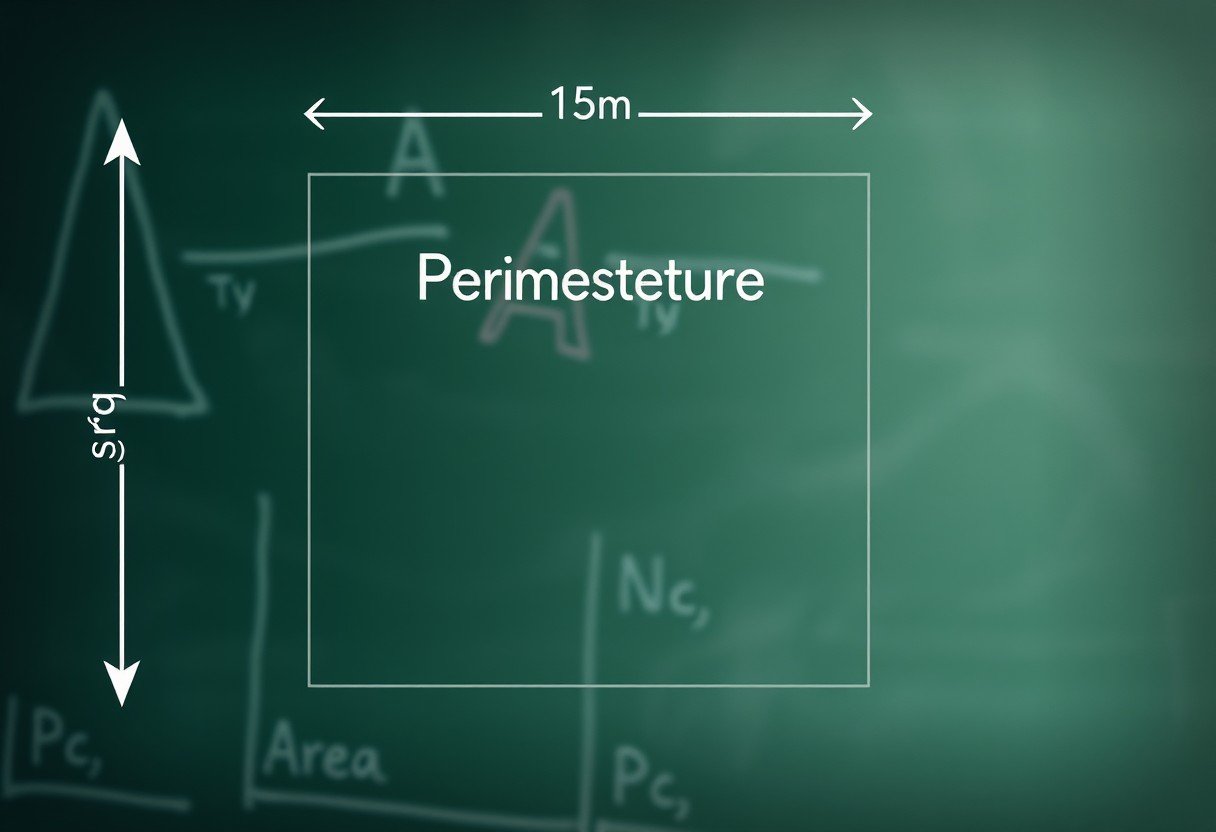The Earth is constantly pulled by the Sun with an enormous, invisible force. This gravitational pull is what keeps our planet locked in orbit, preventing it from flying off into space. Understanding how to calculate this force helps explain everything from our seasons to the very stability of our solar system. The entire process relies on a famous equation developed by Sir Isaac Newton hundreds of years ago.
Understanding Newton’s Law of Universal Gravitation
At the heart of this calculation is the Law of Universal Gravitation, a fundamental principle discovered by Sir Isaac Newton. This law explains that every object in the universe attracts every other object with a force. The strength of this force depends on just two things: the mass of the objects and the distance between them.
The more massive the objects are, the stronger the pull. At the same time, the farther apart they are, the weaker the pull becomes. This relationship is incredibly precise.
The law is represented by a simple but powerful formula: F = G(m1 * m2) / r². Here, ‘F’ is the gravitational force we want to find. ‘G’ is a special number called the gravitational constant, while ‘m1’ and ‘m2’ are the masses of the two objects. Finally, ‘r’ is the distance between the centers of the objects.
The Key Ingredients for the Calculation
To calculate the gravitational force between the Sun and Earth, you need three specific values: the mass of the Sun, the mass of the Earth, and the average distance separating them. Each of these numbers is massive and essential for an accurate result.
The Sun’s mass is the most significant factor in this equation. It is about 333,000 times more massive than the Earth, which gives it a dominant gravitational influence over every planet in our solar system.
Here are the key factors involved:
- The mass of both objects. A larger mass results in a stronger gravitational force.
- The distance between the objects. The force decreases significantly as the distance increases.
- The gravitational constant (G). This is a fixed value that ensures the equation works correctly.
Without these precise measurements, determining the immense force that dictates our planet’s path would be impossible. These values are the foundation of our understanding of orbital mechanics.
How Strong is the Sun’s Gravitational Pull on Earth?
After plugging all the values into Newton’s formula, the result is staggering. The magnitude of the gravitational force acting on the Earth due to the Sun is approximately 3.54 x 10²² Newtons.
To put that number into perspective, it’s a three followed by a five and then twenty more zeros. This is an unimaginably large force, equivalent to the force of trillions of the most powerful rockets ever built, all firing at once. It is this constant, immense pull that bends Earth’s path into a stable, life-sustaining orbit.
While Earth’s orbit is slightly elliptical, meaning the distance and therefore the force changes slightly throughout the year, this average value gives us a clear picture of the powerful connection we share with our star.
How This Force Shapes Our World
The Sun’s gravitational force does more than just keep us in orbit; its effects are felt right here on Earth’s surface. This constant pull is the primary reason we have a stable environment and predictable seasons, which are essential for life to thrive.
This gravitational interaction also plays a secondary role in our ocean tides. While the Moon is the main driver of tides due to its proximity, the Sun’s gravity also tugs on our oceans. When the Sun, Moon, and Earth align, this combined pull results in higher high tides and lower low tides, known as spring tides.
This cosmic tug-of-war demonstrates how interconnected celestial mechanics are with everyday phenomena on our planet, from the changing seasons to the rhythm of the oceans.
Comparing the Sun’s Pull to Other Celestial Bodies
While the Sun is the most powerful gravitational influence on Earth, it isn’t the only one. Other bodies in our solar system, especially the Moon, also exert a noticeable pull on our planet. However, when you compare the numbers, the Sun’s dominance becomes clear.
The Moon’s gravitational pull is much weaker than the Sun’s because of its significantly smaller mass, even though it is much closer. This is a perfect example of how mass and distance both play a crucial role in determining gravitational force.
| Celestial Body | Gravitational Force on Earth (Newtons) |
|---|---|
| Sun | 3.53 x 10²² |
| Moon | 1.98 x 10²⁰ |
As the table shows, the Sun’s gravitational force on Earth is over 178 times stronger than the Moon’s. Even the largest planet, Jupiter, exerts a much smaller force on us than the Sun due to its incredible distance from Earth.
Frequently Asked Questions
What is the gravitational force acting on Earth due to the Sun?
The gravitational force is approximately 3.54 x 10²² Newtons. This massive force is calculated using Newton’s law of universal gravitation and is responsible for keeping Earth in a stable orbit around the Sun.
How does distance affect the gravitational force between the Earth and Sun?
The force is inversely proportional to the square of the distance. This means if the distance were to double, the force would become four times weaker. Earth’s slightly elliptical orbit causes minor changes in this force throughout the year.
Which has a greater effect on Earth’s tides, the Sun or the Moon?
The Moon has a greater effect on Earth’s tides. Even though the Sun’s gravitational pull on Earth is much stronger overall, the Moon is so much closer that its differential pull across the Earth is more significant, creating a larger tidal bulge.
Why doesn’t the Earth fall into the Sun?
Earth doesn’t fall into the Sun because it has sideways momentum, or velocity. Earth is constantly moving forward while the Sun’s gravity is pulling it inward. This balance between forward motion and the inward pull creates a stable, curved path known as an orbit.
What values are needed to calculate the Sun’s gravity on Earth?
To perform the calculation, you need three key values:
- The mass of the Sun (1.989 × 10³⁰ kg)
- The mass of the Earth (5.972 × 10²⁴ kg)
- The average distance between their centers (1.496 × 10¹¹ m)








Leave a Comment